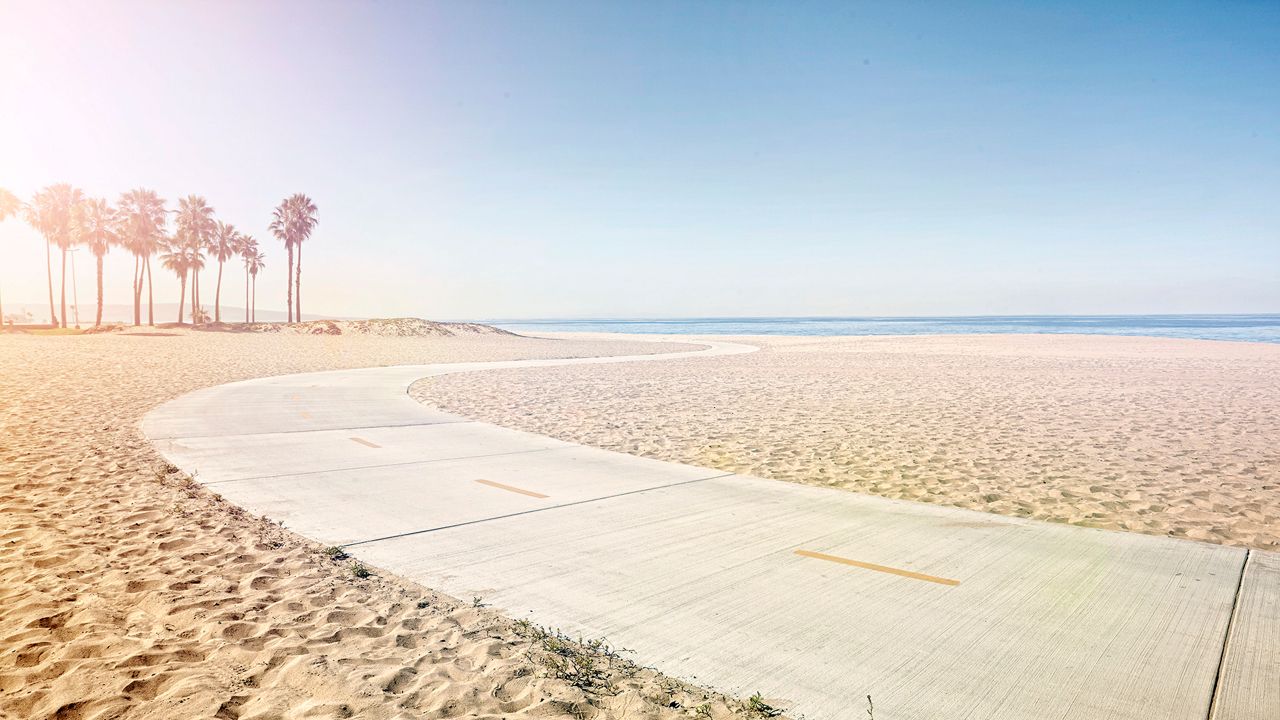During our last couple of heat waves, you may have wondered why none of our meteorologists were talking about Santa Ana winds.
But Santa Anas aren’t the only way that big heat develops across southern California.
In meteorology, there are two types of high pressure: surface based high pressure and upper level ridges of high pressure. Both types of high pressure can have an effect on temperature, and most of the time in southern California, they lead to warmer temperatures.
First, let's look at surface high pressure. Surface high pressure is associated with Santa Ana winds in Southern California. Most of the time when we talk about Santa Ana winds, we talk about heat waves or above average temperatures.
Interestingly enough, that high pressure is not located over southern California. It is located over the Great Basin (the Great Basin is the land between the Rockies and Sierra Nevadas).
Below is the setup for Santa Ana winds in southern California. High pressure sits over the Great Basin and low pressure sits over the eastern Pacific off the southern California coast.
Air flows from high to low pressure, so we get northeasterly winds at the surface over southern California. These winds strengthen as they funnel through the mountain passes and canyons.
These winds also dry out and heat up, as they are compressed going from higher elevations over the high deserts and mountains to sea level. So that’s surface high pressure and how it relates to weather in southern California.
Now, let’s take a look at upper level ridges of high pressure and how they affect southern California weather. On weather maps, these stand out when we look at upper level charts or the 300 millibar (mb) chart.
On average, this is where the jet stream is, or around where commercial airplanes fly, roughly 30,000 feet above sea level.
The map below is a 300 mb chart. Notice the 'H' over Mexico. That is where the ridge is centered. It extends northward into the central United States.
On these charts, the dark lines show constant heights of the 300 mb level. Ridges of high pressure occur where the lines form an ‘n’ shape (like a mountain ridge).
Meanwhile, troughs of low pressure occur where the lines form a ‘U’.
Under ridges of high pressure, you get sinking air, which warms as it sinks. This is called “compressional warming”. Over the eastern Pacific, we get a semi-permanent ridge of high pressure that will move over California.
When this happens, we get a warming trend or a period of weather with above average temperatures.
Another less permanent ridge of high pressure develops over Mexico, and expands north and westward. The map above shows this ridge.
When this ridge expands northward over Utah, Colorado, Arizona and New Mexico, it is called the “Four Corners High”.
Sometimes this ridge of high pressure drifts westward into southern California causing a heat wave. The more amplified the ridge is the warmer the temperatures under it is.
The last two heat waves in southern California were as a result of this upper level ridge expanding westward. There were no Santa Anas involved. When we have an upper level ridge over southern California combined with Santa Ana winds, that is when temperatures can also soar!
